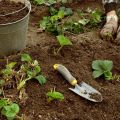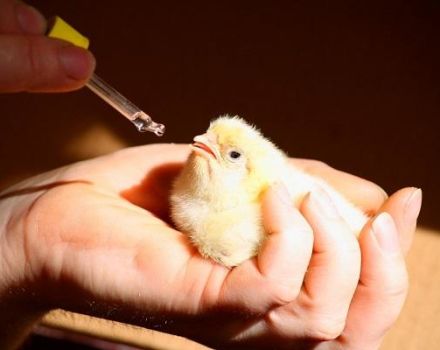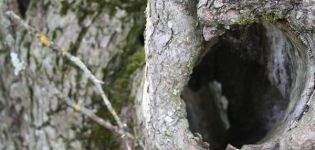How and when is it better to plant strawberries in open ground, preparation of the garden
Of all berry crops, strawberries are the most beloved and popular. Despite the constant concern for the plant and the difficult growing technology, the berry grows in all summer cottages. With care and love, they prepare strawberry beds, choose varieties, plant and take care of the plants. Consider how to plant strawberries correctly to get a high yield and protect bushes from diseases.
Content
- 1 The choice of planting material
- 2 What kind of soil does strawberry like?
- 3 At what distance from each other to plant strawberries
- 4 Where to plant on the site
- 5 Timing
- 6 Planting methods
- 7 How to plant in open ground
- 8 Features of planting in a greenhouse
- 9 Strawberry care
- 10 Disease and pest control
- 11 What to plant after strawberries next year
- 12 Possible landing errors
The choice of planting material
Good seedlings take root better, the bushes grow quickly, give large fruits. For planting, young rosettes are chosen that grow on a mustache. How to choose planting material from your own summer cottage:
- The rosettes are taken from bushes with a high yield, healthy. The age of the bush is 2-3 years.
- The rooted sockets closest to the bush are chosen as planting material. They need to be prepared in advance by pinning the outlet to the ground. After harvesting, they quickly grow.
- You should not divide old excavated bushes for replanting.
- The rosettes are chosen with the most powerful roots - the green part is not so important.
When buying strawberry seedlings, pay attention to healthy leaves (at least 5), light developed roots. If the bushes have peduncles, the buds should be large. Better to purchase varieties of the first reproduction.
What kind of soil does strawberry like?
The best crop of strawberries gives on loamy and sandy loam soils, although it cannot be said that the culture is very demanding on the composition of the land. On such soils, organic fertilizers are applied to the site from the fall during digging and removing weeds. Consumption - 5 liters per square meter. They also improve the composition with complex mineral fertilizers.
Heavy soils are lightened with peat, sand, sawdust. Lime is used to reduce the acidity of peat, it will make the composition neutral. Sawdust is soaked in urea for several days before making.
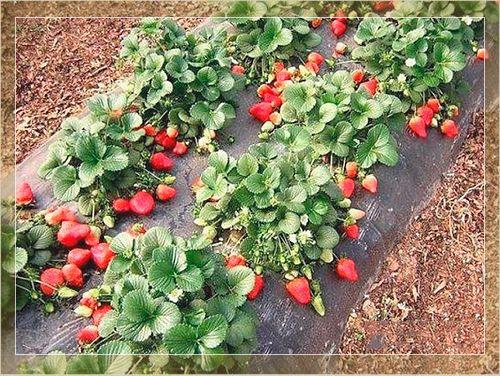
Strawberries grow best on slightly acidic soil with a pH of about 6. They reduce acidity with lime or dolomite flour, if there is a shortage, they are raised with peat. If the groundwater is high on the site (above 0.8 meters), the beds are made loose.
At what distance from each other to plant strawberries
There are several schemes for planting strawberries:
- in single rows - the distance between the bushes is 25-30 centimeters, the row spacing is 35-40 centimeters;
- double rows - the distance between the bushes is 25-30 centimeters, the same distance with the adjacent row, the row spacing is 40-50 centimeters.
Some summer residents plant strawberries with a carpet or separate bushes in convenient places. Plants, when planted alone, are vigorous, with a high yield and large berries. To choose the right distance between the bushes, you need to know the characteristics of the variety and the size of the plants.
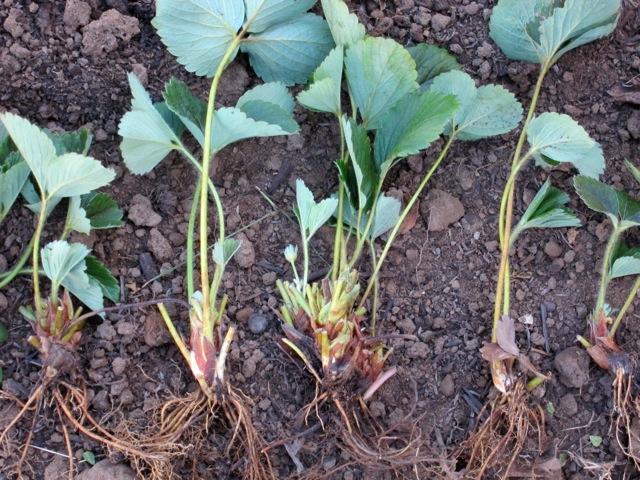
Help: it is allowed to plant different varieties of strawberries next to each other, since they do not have a negative effect on each other, there is no cross-pollination.
Where to plant on the site
For strawberry plantations, flat, well-lit areas without drafts are chosen. The place should be open and shaded only for a small part of the day. Lowlands, where puddles accumulate, and where cold air sinks during frost, are not used for planting.
Slopes should also be avoided - the snow is blown off them in winter by a strong wind, the bushes remain defenseless against frost, in the spring there is a risk of exposing the roots by running water. A slope of no more than 5 ° is allowed.

Note also that strawberries love to coexist with parsley, garlic and legumes. Some summer residents even manage to plant garlic in the aisles of strawberries.
Important: strawberries can grow in one place for no more than four years.
Timing
Strawberry planting is carried out at two time intervals:
- Summer autumn. Plants should root well, so you can't delay with autumn planting. They wait for the heat to leave and plant. On average, from mid-August to late September. The term is chosen according to the characteristics of the region. Planting strawberry seedlings in the fall gives a significant advantage, a full harvest will be already next year.
- Spring. Planting is carried out when the soil has warmed up and the threat of frost has passed, but before the start of real heat. Dates are chosen based on the characteristics of the area - from April in the southern regions to May-early June in cold regions.
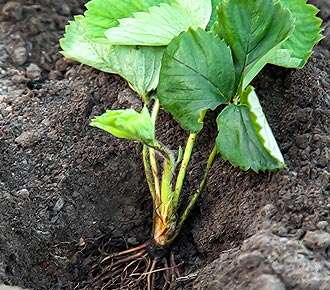
Note that it is necessary to prepare a bed for spring planting of strawberries in August-September. Bushes are planted in the absence of the sun - in the evening and morning hours or in cloudy weather.
Planting methods
Breeders and summer residents knowledgeable in agriculture have developed several interesting and convenient ways of planting strawberries - everyone makes the choice himself.
Trapezoidal beds
This planting method helps to improve the drainage of the area under the strawberries. The ridge is raised above the general level of the garden, which is convenient for high groundwater levels. An earthen platform is made for plants, branches and dried grass are placed in the lower part. The edges are reinforced with a wooden or other frame. A fertile substrate and geotextile are laid on top of the ground, in the holes of which strawberries are planted.
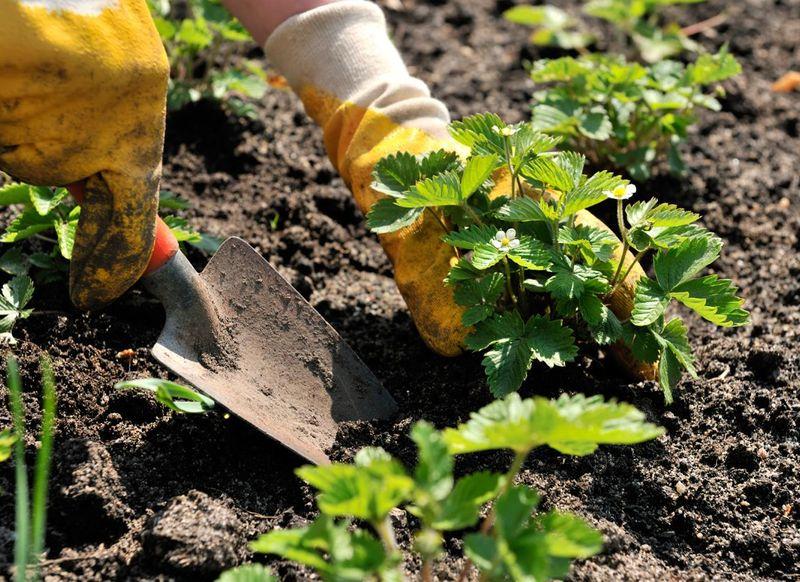
Advantages - the roots are inaccessible to pests, weeds do not grow. A warm bed protects against winter freezing of plants.
Film tunnels
This method of planting strawberries is best for early harvesting and for areas with frequent cold snaps. For a film shelter, arcs are placed on which the film is pulled, forming a greenhouse. Strawberries are kept in a warm greenhouse where temperature and humidity are kept. In case of frost, an additional film is pulled over the structure to protect it from hypothermia.
Such greenhouses need ventilation; in case of excessive humidity and high temperature, the film is removed for drying and cooling.

Polyethylene bags
Mobile ridges can be arranged in large plastic bags. They are filled with fertile soil and fertilized. For planting strawberries, holes are made.Provide full watering.
Disadvantages are poor root ventilation and rapid depletion of the soil, which will have to be changed frequently.
Vertical bed
Landing in a vertical direction - the choice of summer residents with a small area of the site. There are several main methods for the manufacture of such structures; you can purchase ready-made, factory-made (trukar).
Strawberries are planted in iron barrels, large pots, plastic bottles, PVC pipes, and wooden slides. For planting bushes, holes are made. It is important to provide for the possibility of irrigation and to provide full drainage so that water does not stagnate in the lower part of the structure. The main disadvantages of this type of planting are the small amount of land for plants and the complexity of the shelter during frosts.

How to plant in open ground
Before planting, the earth is carefully dug up, the remnants of rhizomes, larvae of May beetles and other insects are removed. If you plan to plant in spring, you still need to prepare the soil in the fall.
After which you can and after which you can not plant strawberries
Vegetable crops grown on the site can facilitate the development of strawberries and make the land more productive. Therefore, it is important to observe crop rotation, taking into account the characteristics of the plants.
| Green manure for soil improvement | Then you can plant strawberries. | Precursor vegetables dangerous for strawberries |
| Marigold Oats Mustard Lupine Vika Rape Calendula | Carrot Radish Beet Parsley Legumes Radish Onion | Cabbage Cucumbers Potatoes Tomatoes Eggplant Zucchini Pumpkin |
In cold regions, in particular in the Leningrad region, it is useful to leave green manures in the ground in the winter, and plant strawberries in the spring.

How to plant seedlings?
The planting holes are made 15-30 centimeters deep, the longer roots are shortened, since they should be placed vertically. Seedlings are treated with a solution of copper sulfate and a growth stimulator. Freshly dug outlets are moisturized and kept in a cool, dark place for several hours. Before being placed to rest, the roots are dipped in a solution of red clay.
When planting, it is important that the central kidney is half buried. It should not stick out above the ground or completely go into the soil. The excess leaves are removed, leaving the youngest (2-3). After planting, the seedlings are watered.
How to plant under black covering material?
The black film is stretched on the prepared bed and fixed at the edges. Landing sites are marked and cross-shaped cuts for holes are made. Watering is carried out further through these holes.

Planting in the hole is carried out according to the usual rules - the root is placed vertically, the kidney is half hidden.
How to plant with seeds?
Seed strawberries are grown using the following step-by-step method:
- The landing date is February-March.
- Seed preparation. The seeds are treated with a weak solution of potassium permanganate. Placed in a damp cloth and put in a warm place (25-27 °) for a day. Then it is kept in the cold for 2 weeks (5 °, a refrigerator is suitable). All this time, the fabric is kept constant moisture.
- Prepare containers with loose light soil mixture. You need to make grooves and bury the seeds into the ground by 1-1.5 centimeters. Cover with foil and put in a warm, well-lit place.
- Watering - as the soil dries, with a spray bottle, after emergence - with a pipette at the root.
- Top dressing - complex mineral fertilizers.
- Fungicide treatment against fungus.

Dive when 3 leaves appear.
Features of planting in a greenhouse
Self-pollinated remontant varieties are chosen for growing strawberries in greenhouses. Ideally suited for this, the favorite of all summer residents - Elizabeth 2.
The soil must be thoroughly disinfected, treated with fungicides, since at high humidity, strawberries suffer from fungal diseases. Recommended humidity is 70-80%. With early planting, provide illumination for 12-14 hours.
The location of the beds is chosen based on the capabilities of the greenhouse, many prefer vertical cultivation. Seedlings are transplanted into greenhouses when it is possible to maintain a temperature of 20-22 °. Do not forget to open the greenhouse for ventilation.

Strawberry care
Strawberry care is not difficult, but constant care is required. After rains and watering, the earth is loosened to saturate with oxygen; Mulching helps to facilitate maintenance.
Watering and feeding
Homemade strawberries are watered 1-2 times a week, avoiding stagnant water and drying out. The best time is morning and evening. Water is not poured on leaves in bright sun to avoid burns. It is convenient to use drip irrigation systems, in which you can meter the water supply. It is better to water with lukewarm water so that the roots do not rot.
Top dressing for the season is carried out several times:
- in early spring - after the snow melts, fertilizers with nitrogen (manure, chicken droppings) for better growth of the green part;
- during flowering - with complex mineral fertilizers with potassium, yeast, spraying with a solution with trace elements;
- when fruiting - with organic fertilizers at the root, after fruiting - herbal infusion, urea;
- in the fall - for greater winter hardiness and restoration of strength (nitrophoska, ash, manure solution).

It is convenient to add chelates for dressing.
Tip: It is especially important to fertilize remontant varieties and vertical beds in which strawberries grow in a small amount of land.
Treatment
You need to loosen the strawberries to a depth of 10 centimeters in order to create air flow to the roots. Weeds are removed along with the roots. With a large contamination of the area, herbicide treatment is carried out before planting strawberries on the site.
To avoid fungal and other diseases, the bushes are sprayed:
- infusion of hay;
- mustard infusion;
- infusion of garlic.

You can also sprinkle wood ash on the bushes.
Pruning
Strawberry bushes are pruned several times a season, carefully, trying not to damage the buds:
- remove old leaves in spring and make room for young greenery;
- in summer - cut out damaged leaves, remove unnecessary sockets, create comfortable conditions for growth for those who have decided to leave;
- after complete harvesting, old leaves are removed, giving room for young ones;
- in autumn - foliage is not completely removed, only diseased leaves are cut out and infected bushes are dug up.
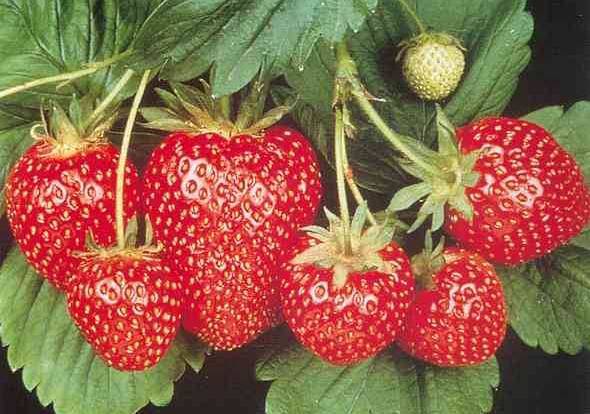
The leaves are cut, leaving a short stalk, protecting the bud from damage. In the first year, all rosettes are removed, allowing the strawberries to grow stronger.
Mulching
When growing strawberries, experienced summer residents recommend using soil mulching. This not only reduces the need for frequent watering and protects against weeds, but also protects the berries from soil pollution and decay.
Two classes of materials are used as mulch - organic and synthetic fabrics. After digging, the organic matter loosens the soil and turns into a complete fertilizer for garden strawberries. Materials used:
- straw, hay;
- dry grass;
- sawdust;
- peat, rotted compost;
- soil substrate of coniferous forest - needles, cones, small twigs;
- geotextile.

Less traditional materials are often used for mulch - paper, moss. Recall that materials are treated with fungicides and the top layer is regularly replaced.
Preparing for winter
For successful wintering of strawberries, the following activities are carried out:
- removal of diseased leaves and bushes, the completely green part is not cut off;
- treatment against pests and diseases (Bordeaux liquid);
- watering - abundance depending on the weather;
- top dressing - any kind of organic matter.
Covering and mulching is carried out in regions where there is a risk of freezing strawberries. Shelter with mulch or earth is used even in warm regions, they will protect with a lack of snow.

Disease and pest control
Throughout the season, the bushes are examined, diseased leaves and plants are removed.Preventive treatment in spring and autumn, when there is still no flowering and fruit, helps to avoid infection. Most of the diseases of strawberries are fungal in nature - fusarium, late blight, gray rot. For treatment, fungicides are used (Alirin, Vectra, colloidal sulfur, copper sulfate). Dilute according to instructions.
Among the most common pests:
- nematode;
- whitefly;
- aphid;
- bear;
- weevil;
- strawberry mite.
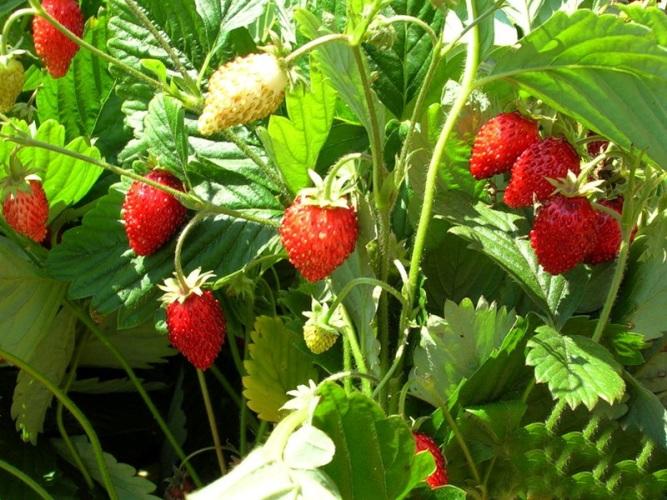
The choice of the drug is carried out after identifying insects. Inta-Vir, Karbofos, Commander are used.Treatment for diseases and pests is carried out simultaneously with feeding, preferably prophylactically.
What to plant after strawberries next year
After transferring a strawberry plantation to another site, the following crops grow well in its place:
- carrot;
- legumes;
- greenery;
- cabbage;
- garlic.
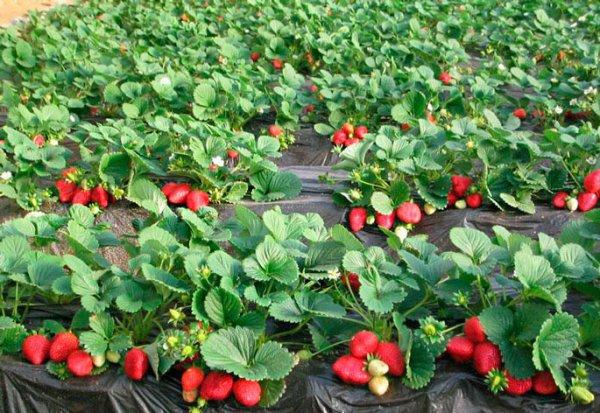
Some summer residents breed melons and gourds on the strawberry plot. If it is possible not to occupy this area for vegetables, it is worth planting green manure.
Possible landing errors
Consider the most common mistakes of inexperienced summer residents that interfere with the full growth of strawberries:
- Wrong timing. Plants suffer from heat or cold, do not have time to get stronger and take root.
- We made a mistake with the variety - the bushes are low-yielding, the strength of the plant goes to the green (Zhmurka, Dubnyak).
- Unnecessarily long roots had to be bent, resulting in poor strawberry development.
- Diseased plants were planted - no pre-planting treatment was carried out.
- The kidney is excessively buried in the ground or excessively raised.
- Lack of dressing - low yield, small berries.
- The wrong fertilizers are chosen - excessive growth of the green part, the fruits are not tied.
Strawberries love sunny areas and do not grow well in the shade - the berries are small and sour. Growing tasty large strawberries is the dream of every summer resident. After the end of fruiting, the worries of summer residents do not end. It takes all the season to work on the strawberry plantation. Only with constant care, the bushes will give a bountiful harvest, and the berries will delight in size, taste and aroma.





